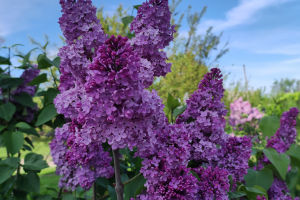Have you ever wondered why the leaves of most plants are green? It's a simple question, but it opens the door to a fascinating exploration of nature's science.
Let's dive into the world of plants and uncover the secret behind their vibrant green color. Spoiler alert: It's all about a special pigment known as chlorophyll and the process of photosynthesis. Read on as we unravel this botanical mystery together!
The Role of Chlorophyll in Plants
Chlorophyll, the pigment responsible for the green color of plants, plays a vital role in how plants survive. It is found in the chloroplasts of plant cells and is crucial for the process of photosynthesis. Chlorophyll absorbs light from the sun, primarily in the blue and red wavelengths, and reflects green light, which is why leaves appear green to our eyes.
But chlorophyll's function goes beyond just giving plants their color. It acts as a solar collector for plants, capturing the energy from sunlight. This energy is later used in the photosynthesis process to create food for the plant, ensuring its growth and survival.
Photosynthesis: The Heart of Plant Life
So, what happens after chlorophyll absorbs sunlight? The magic happens in a process known as photosynthesis. In simple terms, photosynthesis is how plants make their own food by converting light energy, carbon dioxide, and water into glucose and oxygen. This process is essential not only for the plant's survival but also for the environment, as it produces oxygen that we breathe.
Here's how it works: Sunlight is absorbed by chlorophyll and other pigments in the plant. This energy is used to split water molecules, releasing oxygen. At the same time, the plant absorbs carbon dioxide from the air through small openings in its leaves called stomata. Using the energy from the sunlight, the plant combines carbon dioxide and water to produce glucose, a type of sugar that provides energy for growth and development.
Why Green? The Evolutionary Advantage
You might be thinking, why don't plants use other colors to absorb sunlight? The reason plants use green chlorophyll is tied to evolution. Chlorophyll is highly efficient at absorbing light from the sun, particularly the red and blue parts of the light spectrum. While plants could, theoretically, use other pigments to absorb light, chlorophyll's ability to capture energy is unparalleled, which explains why it became the dominant pigment in most plants.
Interestingly, some plants have evolved to use different pigments, like red or purple, but this typically happens in specific environments or for particular functions. The green pigment is simply the most efficient option for most plants.
The Importance of Photosynthesis to the Environment
We often overlook the significance of photosynthesis, but it has a profound impact on our planet. Through photosynthesis, plants produce oxygen and help regulate the amount of carbon dioxide in the atmosphere, both of which are critical for maintaining the Earth's delicate balance. Without photosynthesis, life as we know it would not be possible. Plants are at the foundation of nearly all food chains, and the oxygen they produce is essential for our survival.
Moreover, photosynthesis helps in mitigating climate change by absorbing carbon dioxide—a key greenhouse gas—from the atmosphere. This natural process helps regulate the planet's temperature and contributes to sustaining life.
Conclusion: Nature's Green Machine
In conclusion, the reason plants have green leaves is not just about aesthetics; it's all about survival. Chlorophyll, the pigment that gives leaves their green color, is the key player in photosynthesis, enabling plants to convert sunlight into the energy they need to thrive. This process supports the growth of plants and, in turn, contributes to the health of our planet.
So, next time you step outside and admire the greenery, remember that those leaves are busy working hard, not just for the plant, but for us all. They're making the oxygen we breathe, helping to balance our climate, and supporting the entire food chain. Isn't nature amazing?


